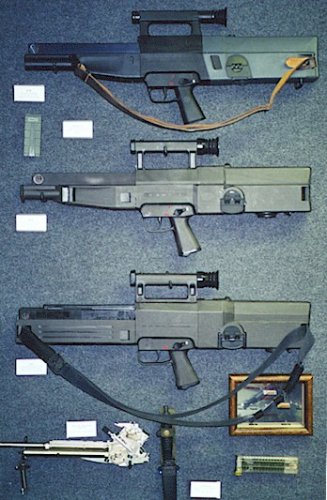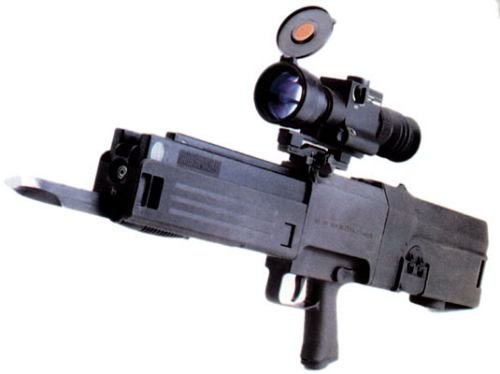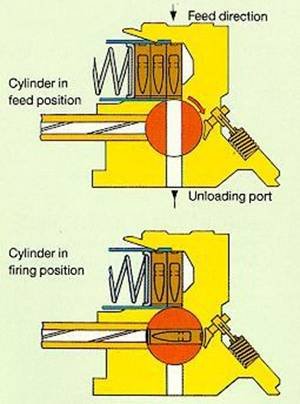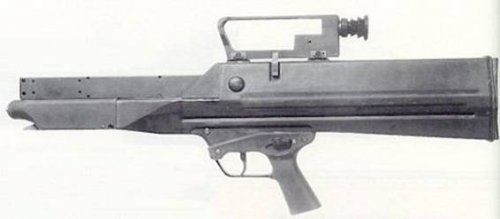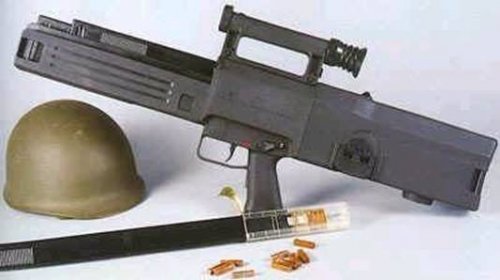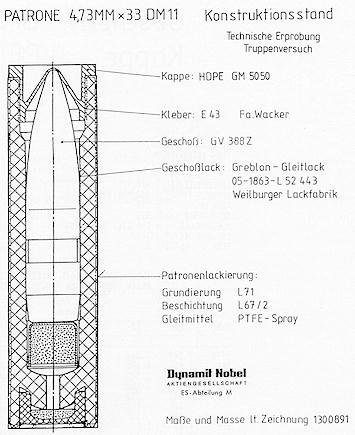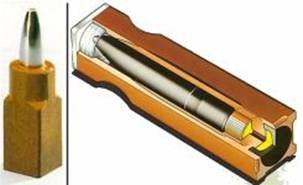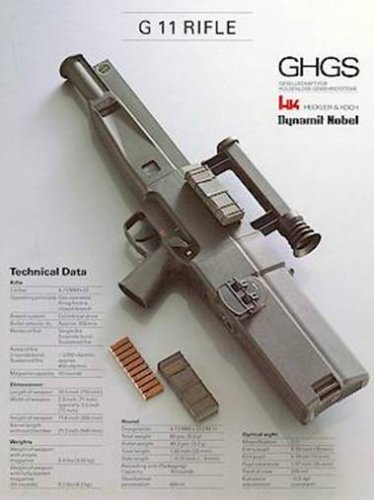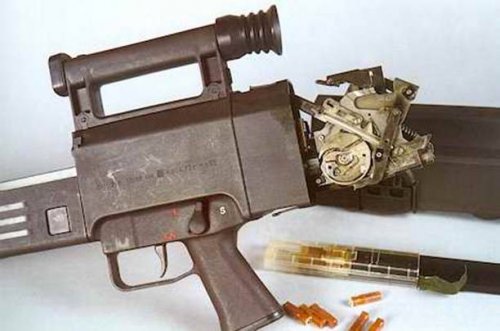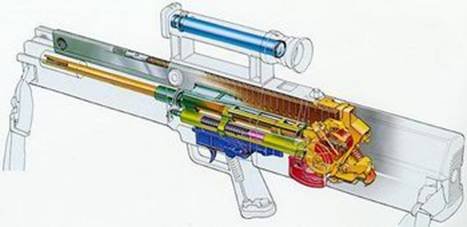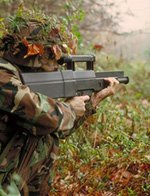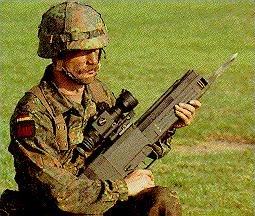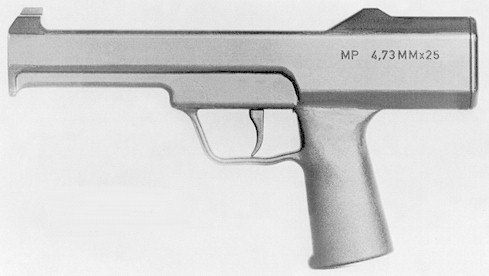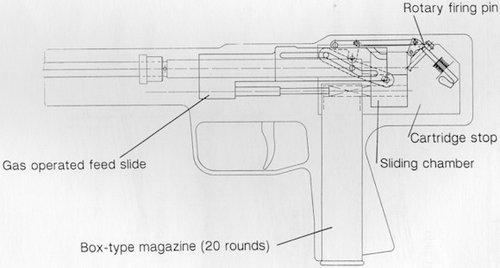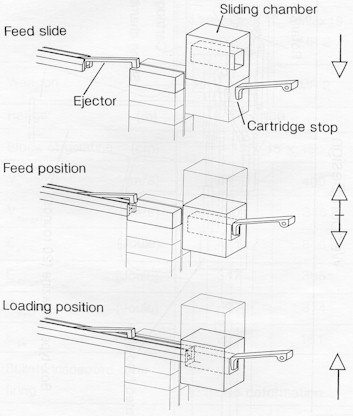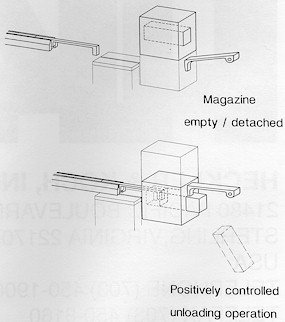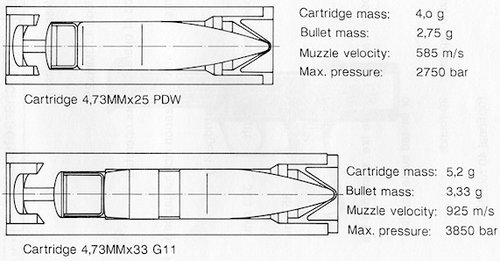The Heckler & Koch G11 is a non-production prototype assault rifle developed during the 1970s and 1980s by Gesellschaft für Hülsenlose Gewehrsysteme (GSHG) (German for "Corporation for Caseless Rifle Systems"), a conglomeration of companies headed by firearm manufacturer Heckler & Koch (mechanical engineering and weapon design), Dynamit Nobel (propellant composition and projectile design), and Hensoldt Wetzlar (target identification and optic systems). The rifle is noted for its use of caseless ammunition.
It was primarily a project of West Germany, though it was also of significance to the other NATO countries as well. In particular, versions of the G11 were included in the U.S. Advanced Combat Rifle program.
http://en.wikipedia.org/wiki/Heckler_%26_Koch_G11
http://en.wikipedia.org/wiki/Advanced_Combat_Rifle
http://www.hkpro.com/index.php?option=com_content&view=article&id=23:the-g11-caseless-military-rifle&catid=11:rare-prototypes&Itemid=5
http://www.nazarian.no/wep.asp?id=186&group_id=5&country_id=81&lang=0
http://world.guns.ru/assault/as42-e.htm
http://www.remtek.com/arms/hk/mil/g11/g11.htm
http://www.youtube.com/watch?v=MdErfyYeJeU
http://www.youtube.com/watch?v=n6JWCEmCgD8
It was primarily a project of West Germany, though it was also of significance to the other NATO countries as well. In particular, versions of the G11 were included in the U.S. Advanced Combat Rifle program.
http://en.wikipedia.org/wiki/Heckler_%26_Koch_G11
http://en.wikipedia.org/wiki/Advanced_Combat_Rifle
http://www.hkpro.com/index.php?option=com_content&view=article&id=23:the-g11-caseless-military-rifle&catid=11:rare-prototypes&Itemid=5
http://www.nazarian.no/wep.asp?id=186&group_id=5&country_id=81&lang=0
http://world.guns.ru/assault/as42-e.htm
http://www.remtek.com/arms/hk/mil/g11/g11.htm
http://www.youtube.com/watch?v=MdErfyYeJeU
http://www.youtube.com/watch?v=n6JWCEmCgD8

